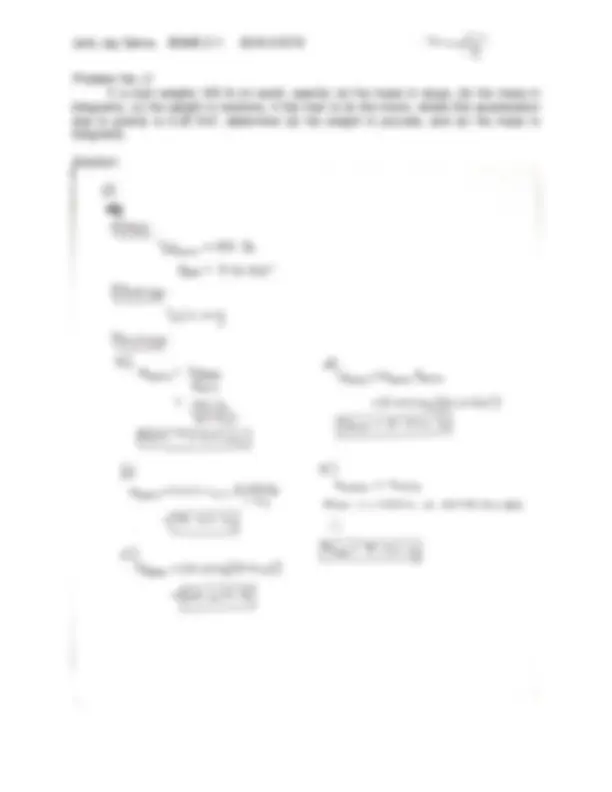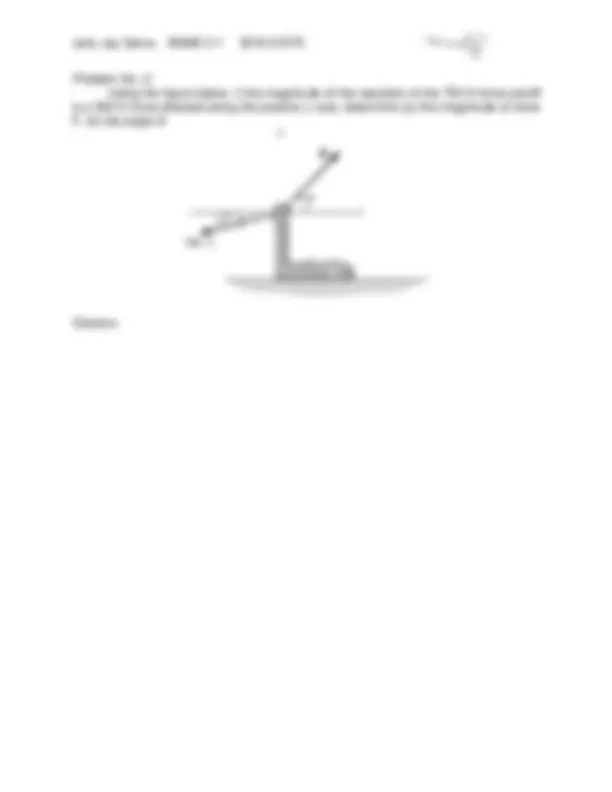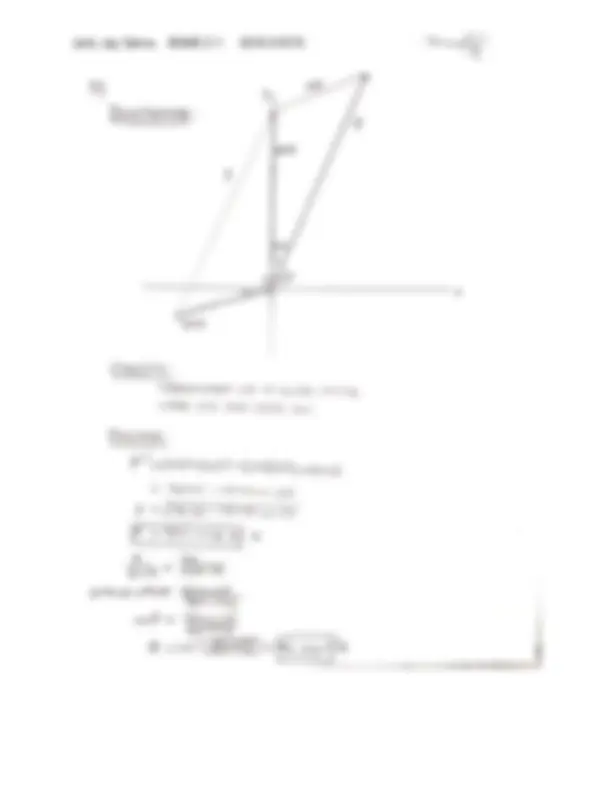





Study with the several resources on Docsity

Earn points by helping other students or get them with a premium plan


Prepare for your exams
Study with the several resources on Docsity

Earn points to download
Earn points by helping other students or get them with a premium plan
Community
Ask the community for help and clear up your study doubts
Discover the best universities in your country according to Docsity users
Free resources
Download our free guides on studying techniques, anxiety management strategies, and thesis advice from Docsity tutors
Vectors and Rectangular representation of forces in two-dimensions and three-dimensions
Typology: Exercises
1 / 7

This page cannot be seen from the preview
Don't miss anything!




Answer the following problems and show your complete solution. Use the file name: FamilyName_ID#_Activity (ex. Castañeda_2017-19070_PracticeProblemSetWeek1). Attach the file in PDF format and submit to USeP Virtual Environment (UVE). Deadline of Submission: Sept. 21, 2020 11:59PM. Scoring will be based on the rubric below: Problem No. 1: Determine the gravitational force in N which the copper sphere exerts on the steel sphere. Both spheres are homogeneous, and the value of 𝑟 is 50 mm. Density of copper and steel are 8910 kg/m^3 and 7830 kg/m^3 , respectively. Solution: Item Rubrics for Problem Solving Maximum Raw Score In Percent Description 1 There is no attempt to solve the problem. 0 Unsatisfactory 2 Identifies the questions required in the problem and presents the data necessary to solve questions. 25 Developing 3 Draws the model figure (if needed), and present the basic principles with appropriate sketches + Item 2 50 Satisfactory 4 Presents definite ideas of the work and provides logical steps of the solution + Item 3 75 Very Satisfactory 5 Answered all of the questions + Item 4 100 Exemplar
Problem No. 3 : Using the figure below, if the magnitude of the resultant of the 700 N force and 𝐅 is a 500 N force directed along the positive 𝑦-axis, determine (a) the magnitude of force F, (b) the angle θ. Solution: